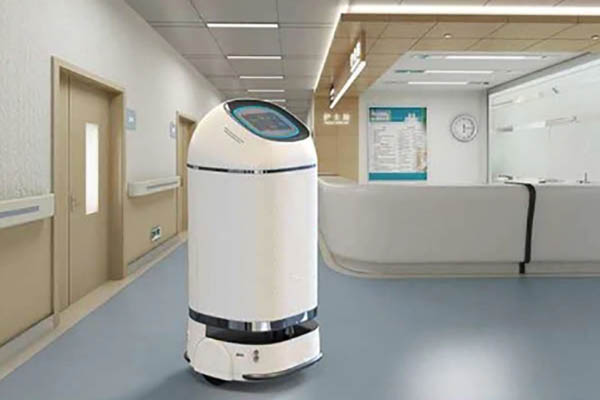In an era where hygiene and cleanliness have become paramount, especially in public spaces and healthcare settings, the demand for advanced disinfection technologies has surged. One such innovation that has gained significant attention is the omnidirectional disinfection machine. This machine offers comprehensive and efficient disinfection, ensuring that all surfaces and areas within a room are thoroughly sanitized. But what exactly is an omnidirectional disinfection machine, and how does it work? Let’s explore.
Understanding Omnidirectional Disinfection
An omnidirectional disinfection machine is a device designed to disinfect spaces in all directions, effectively covering every surface within its range. Unlike traditional disinfection methods that often require manual application or rely on a single direction of spray, these machines are built to emit disinfectant in a 360-degree pattern, ensuring complete and uniform coverage.
This comprehensive approach is particularly effective in environments where thorough disinfection is crucial, such as hospitals, schools, offices, and public transportation. By eliminating pathogens from all surfaces, these machines help to significantly reduce the risk of disease transmission.

How Does an Omnidirectional Disinfection Machine Work?
The operation of an omnidirectional disinfection machine can vary depending on the model and technology used. However, most machines generally function using one of the following technologies:
- Ultraviolet (UV-C) Light: UV-C light is a powerful disinfection tool that can destroy the DNA and RNA of microorganisms, effectively killing bacteria, viruses, and fungi. Omnidirectional disinfection machines equipped with UV-C lamps can rotate or be strategically placed to ensure all surfaces within a room are exposed to the light. This method is chemical-free and ideal for spaces where residue or moisture from disinfectants might be problematic.
- Electrostatic Spraying: These machines use electrostatic technology to charge disinfectant particles as they are sprayed out. The charged particles are attracted to surfaces, including those that are hard to reach or might be missed with conventional cleaning methods. The omnidirectional nature of the machine ensures that disinfectant is distributed evenly throughout the space.
- Fogging or Misting: Fogging machines release a fine mist of disinfectant that can cover large areas quickly and thoroughly. Omnidirectional models are designed to rotate or disperse fog in all directions, ensuring comprehensive coverage. This method is particularly useful for spaces with complex geometries or high ceilings.
There are several benefits to using omnidirectional disinfection machines, making them an attractive choice for various industries:
- Comprehensive Coverage: These machines are designed to disinfect every surface in a room, ensuring no spot is left untouched. This level of thoroughness is difficult to achieve with manual cleaning or traditional disinfection methods.
- Time Efficiency: Omnidirectional disinfection machines can disinfect a room in a fraction of the time it would take to clean manually. This is especially beneficial in environments that require frequent or rapid disinfection, such as hospitals or airports.
- Reduced Human Error: Since the machine operates automatically and covers all surfaces, the risk of human error is minimized. There is no need to worry about missed spots or uneven application of disinfectants.
- Versatility: These machines can be used in a wide range of environments, from healthcare settings and public transportation to schools and office buildings. Their ability to disinfect large areas quickly makes them highly versatile.
- Chemical-Free Options: For those concerned about the use of chemicals, UV-C light machines provide an effective alternative without the need for disinfectant solutions. This is particularly important in environments where chemical residues could be harmful.
Applications of Omnidirectional Disinfection Machines
Omnidirectional disinfection machines are used in various settings to maintain high standards of cleanliness and hygiene:
- Healthcare Facilities: Hospitals and clinics use these machines to disinfect patient rooms, operating theatres, and waiting areas, reducing the risk of healthcare-associated infections (HAIs).
- Public Transportation: Trains, buses, and airplanes utilize these machines to sanitize passenger areas, ensuring a safer travel experience.
- Educational Institutions: Schools and universities use these machines to disinfect classrooms, libraries, and common areas, protecting students and staff from the spread of infectious diseases.
- Commercial Spaces: Offices, retail stores, and gyms implement these machines to provide a clean environment for employees and customers.
- Hospitality Industry: Hotels and restaurants use omnidirectional disinfection machines to maintain high standards of hygiene, enhancing guest confidence and satisfaction.
Conclusion
The omnidirectional disinfection machine represents a significant advancement in disinfection technology. By providing comprehensive, efficient, and versatile disinfection, these machines are becoming an essential tool in various sectors, ensuring safer and cleaner environments. As we continue to navigate the challenges of maintaining hygiene in public and private spaces, innovations like the omnidirectional disinfection machine play a crucial role in protecting public health.